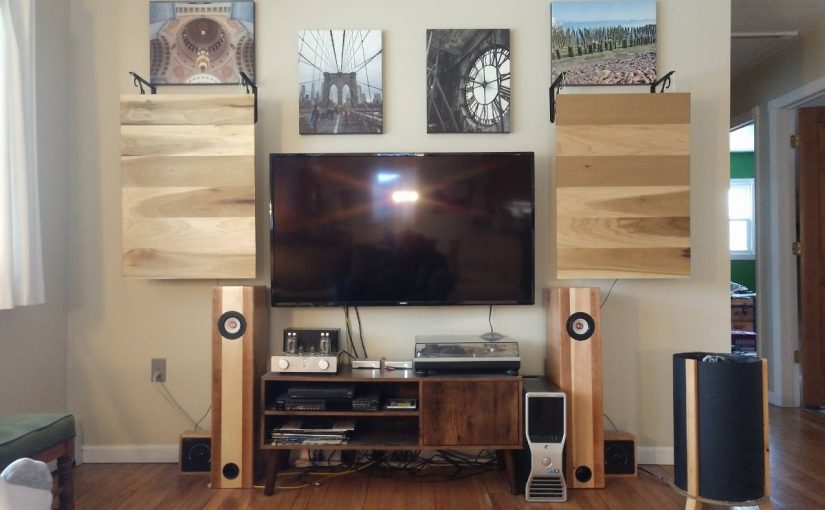My journey into home stereo speakers and high-quality audio continues…
This is not a broadcast-related post, but I find this type of thing interesting nonetheless. A few years ago, I began fiddling around with flat panel speakers or Distributed Mode Loudspeakers (DML). My first attempt was lackluster, although adequate and not very expensive.
I enjoy listening to all types of music. I notice that some music reproduces better than others. The piano is a particularly difficult instrument to record and faithfully reproduce because of the complexity of the instrument itself. It is a percussive string instrument. When one of the hammers strikes a sting, the string itself does not make a very loud noise. The string is connected to a soundboard through a bridge. The much larger soundboard vibrates and amplifies the initial sound. Thus, the wood itself imparts a noticeable quality to the sound. Several other instruments such as acoustic guitar, violin, etc also use tonewood to amplify sound. Thus, when listening to a piano being played back on a set of speakers, it lacks much of the original texture of the actual instrument. It sounds like a recording of a piano, not an actual piano.
This made me think of ways to improve that reproduction.
A DML uses a large flat surface to reproduce sound. The large surface area and the bi-directional nature of the panel means the sound will be defused and not directional as is the case with conventional speakers at higher frequencies.
The principal characteristics of the material used in a DML are stiffness and density. The less dense (lightweight) and the stiffer the better. All materials have internal resonances, some decay quickly and others, such as steel will ring for a long time. A ringing reverb sound would be undesirable in most cases. Tonewood has suitable stiffness and a relatively high sound radiation coefficient that varies in density according to species and generally dampens high-frequency harmonics. Pianos often use Sitka Spruce for soundboards.
I made two terminated transmission line speakers last summer. Those sound great, but using one driver to reproduce all sound from 20-20,000 Hz has a drawback; the high-end lacks detail and is very directional.
A bit of research shows that Poplar has good to very good tonewood qualities while being inexpensive and readily available at the local big box hardware store. Thus, I purchased several 1/4 x 6 x 48 inch (6 x 152 x 1220 mm) planks and a few pieces for bracing to make two 33 x 22 inch (838 x 559 mm) flat panels. The idea here is to gently cross over the transmission line speakers at 4,500 Hz with these flat panels.
The assembly process was pretty easy. It took perhaps two hours to cut all the pieces to the right size. I used a router to chamfer the edges of the back bracing, mostly to reduce the weight of the brace. Everything was glued up and allowed to dry for 24 hours.
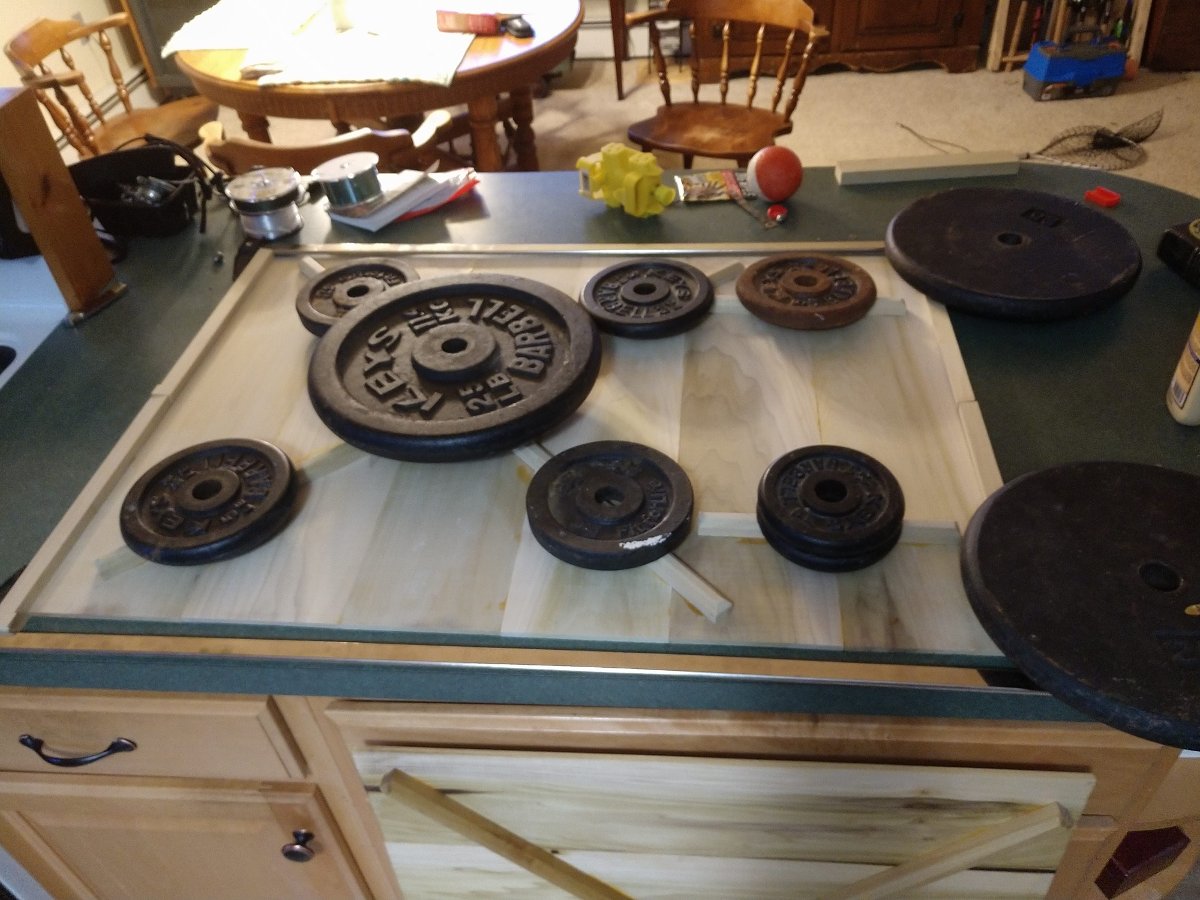
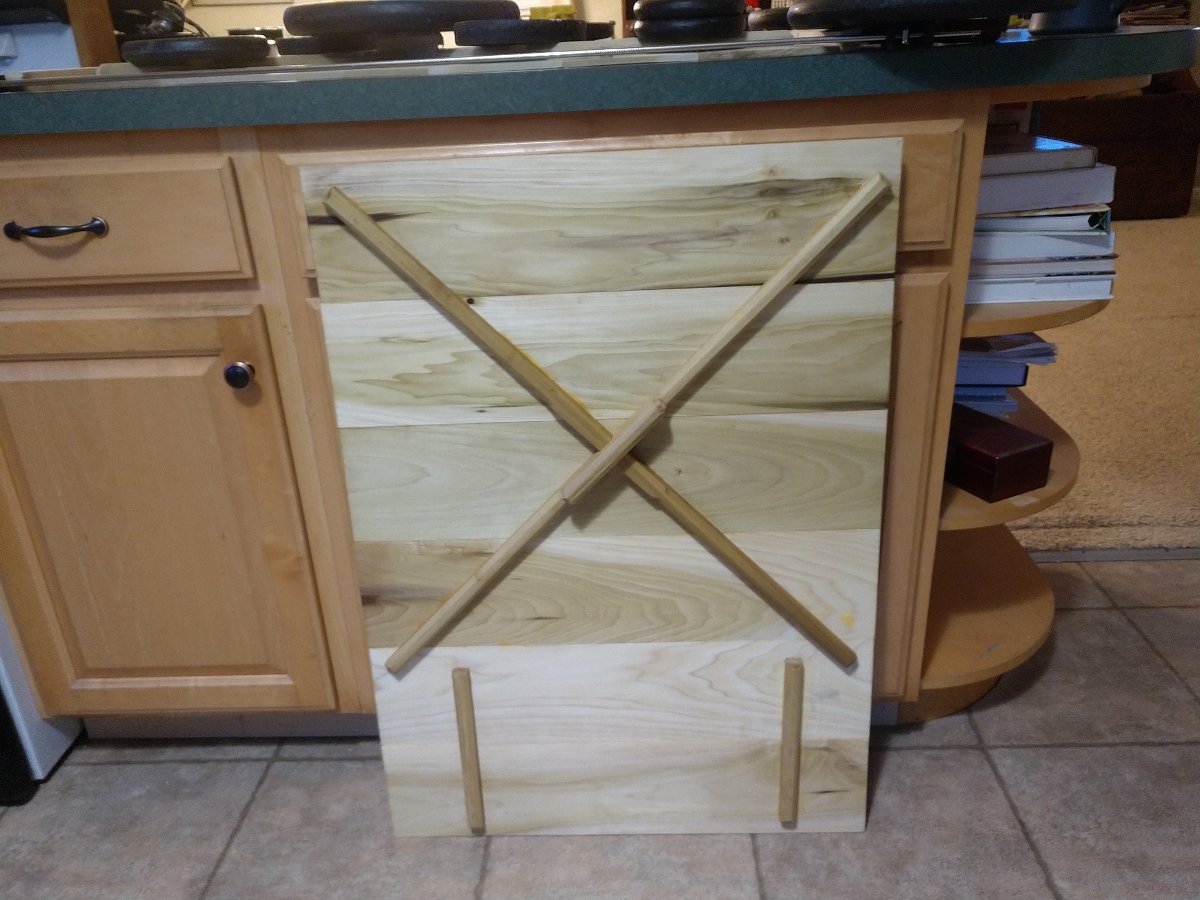
The bracing is designed to keep the panel stiff and helps with structural integrity. I sanded the fronts and backs of the panels, then finished them with Tung Oil.
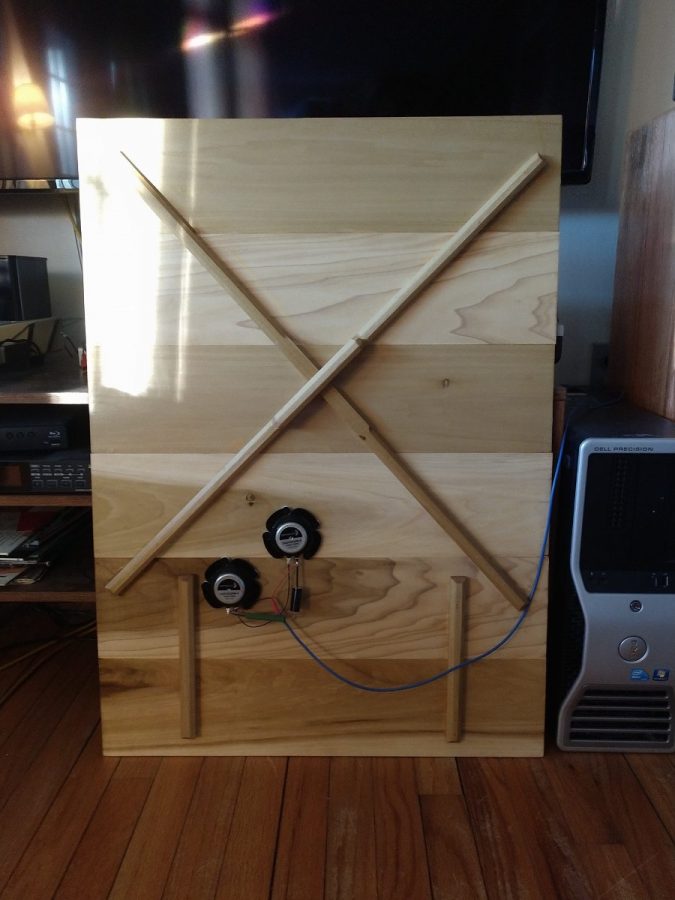
Each panel uses two Dayton DAEX32QMB-4 tactile exciters wired in series. There is also a Zobel network which is important for a tube amp. Most drivers’ impedance will rise as the frequency increases. This rising impedance is mostly reactance from the driver coil. For solid-state amps, this is not much of a problem. However, tube amps, because of the output transformer, need a fairly constant impedance across their output range. This is because the output transformer is a ratio device. The primary impedance is derived from the impedance on the secondary (e.g. what the secondary is terminated with). For example, a certain tube has a 5,000-ohm plate impedance. The output transformer is chosen to match this design specification. The output transformer is designed to drive an 8-ohm loudspeaker. However, the driver impedance rises to 16 ohms at 15 KHz and 24 Ohms at 20 KHz. Under those conditions, the tube would be seeing a 10,000-ohm impedance at 15 KHz and a 15,000 Ohm impedance at 20 KHz. This will lead to added distortion. The Zobel network keeps the impedance fairly uniform across the entire audio range.
Rather than build a cross-over into the transmission line speakers, I made an external unit. This allows the speaker system components to operate independently if needed. I can easily change the cross-over components for a different crossover point. I can also mix and match things in the future. In other words, it gives me a great deal of flexibility for future projects and experimentation.

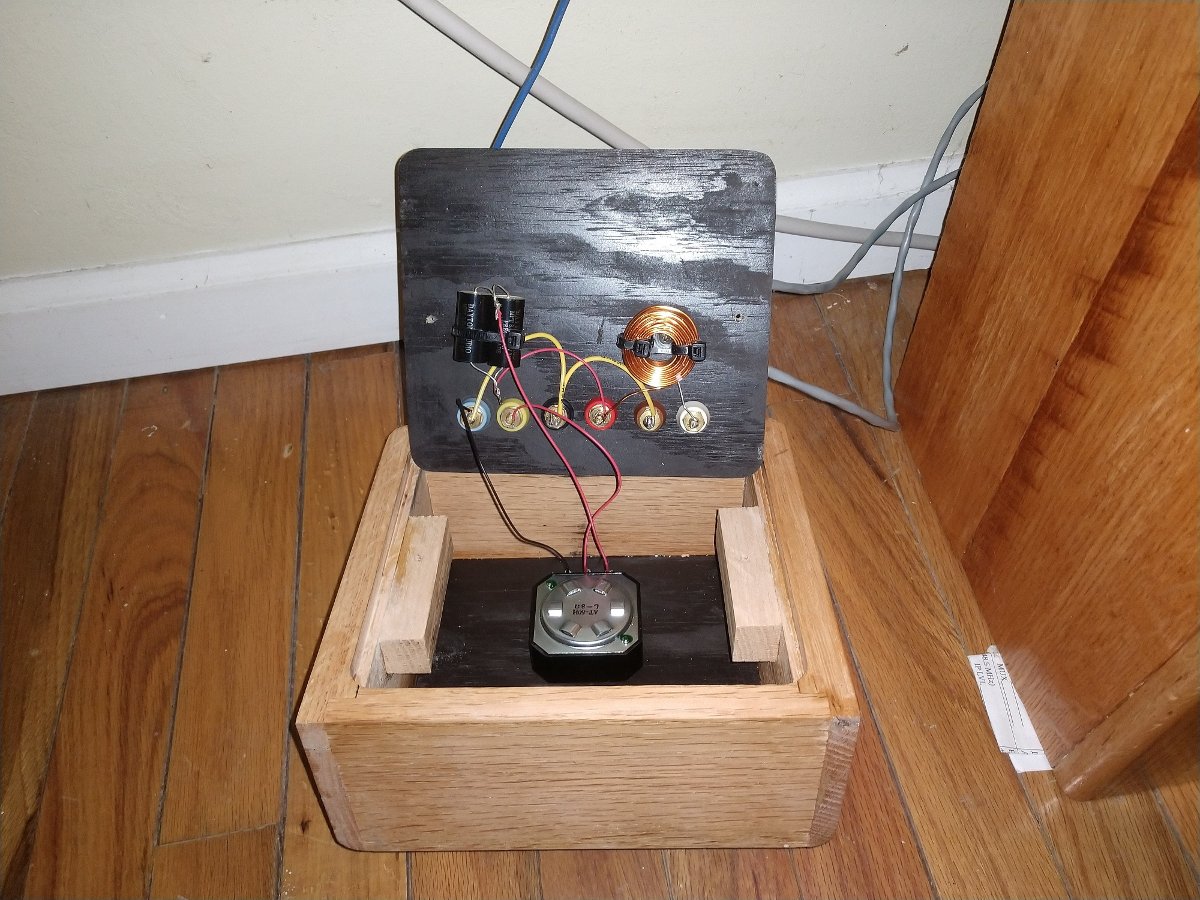
I made these small boxes to match the speakers. These contain the crossover and HF attenuator. The attenuator is necessary because of the difference in efficiency between the transmission line driver and the tactile drivers on the DML.
The schematic looks like this:
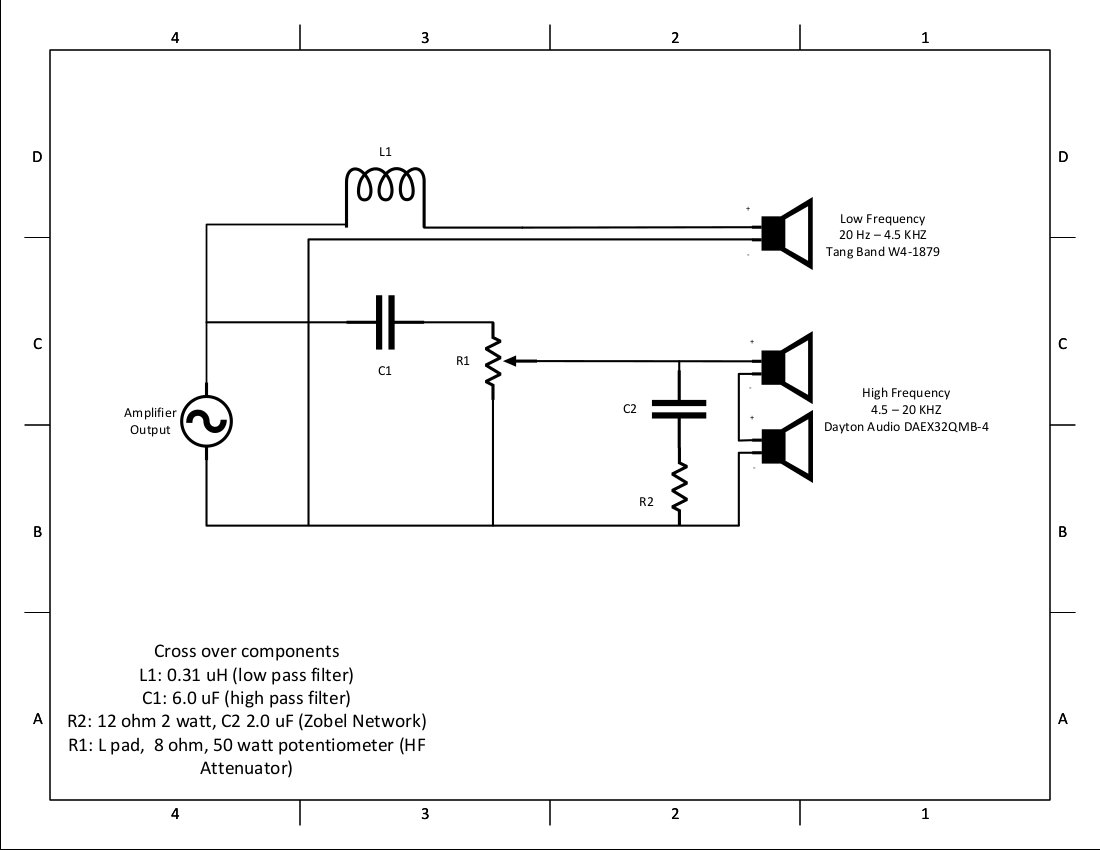
I kept things as simple as possible. Yes, I could have made a 12 dB per octave crossover with a few additional components, however, I like the gentle blend of both drivers in the mid-ranges.
A basic sweep with Room EQ Wizard shows a fairly flat response. There is a room resonance of around 90 Hz which I intend to correct with some sound-deadening materials in the corners and possibly a bass trap.
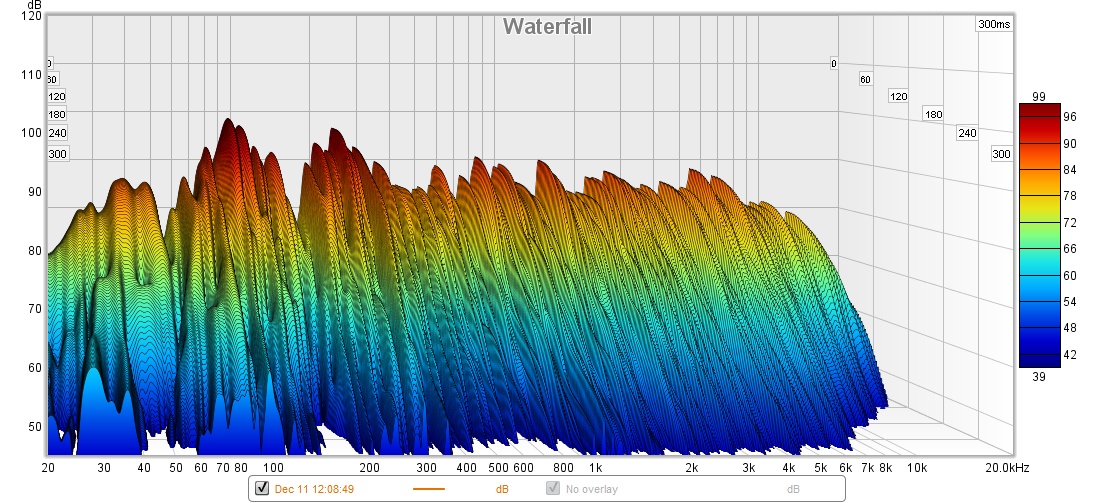
This shows that the speaker system is relatively flat from about 200 Hz to 10 KHz. Those bumps and dips from 88 to 250 Hz are all room due to room resonance.
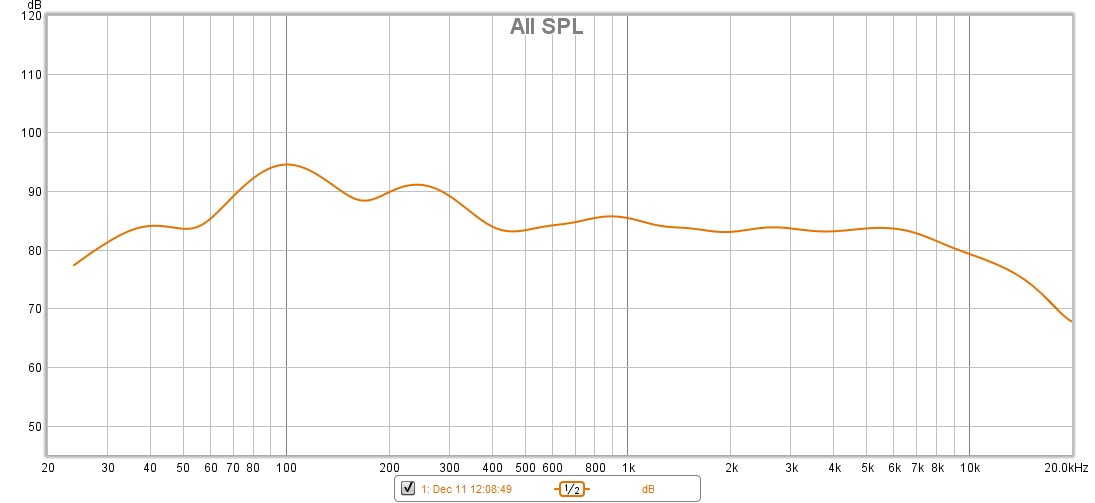
How does it sound? Pretty good! Here is some copyright-free music, recorded from youtube, then re-uploaded to youtube! It is not the best video, there is some background noise, etc. However, it gives a pretty good idea of how these sound.

